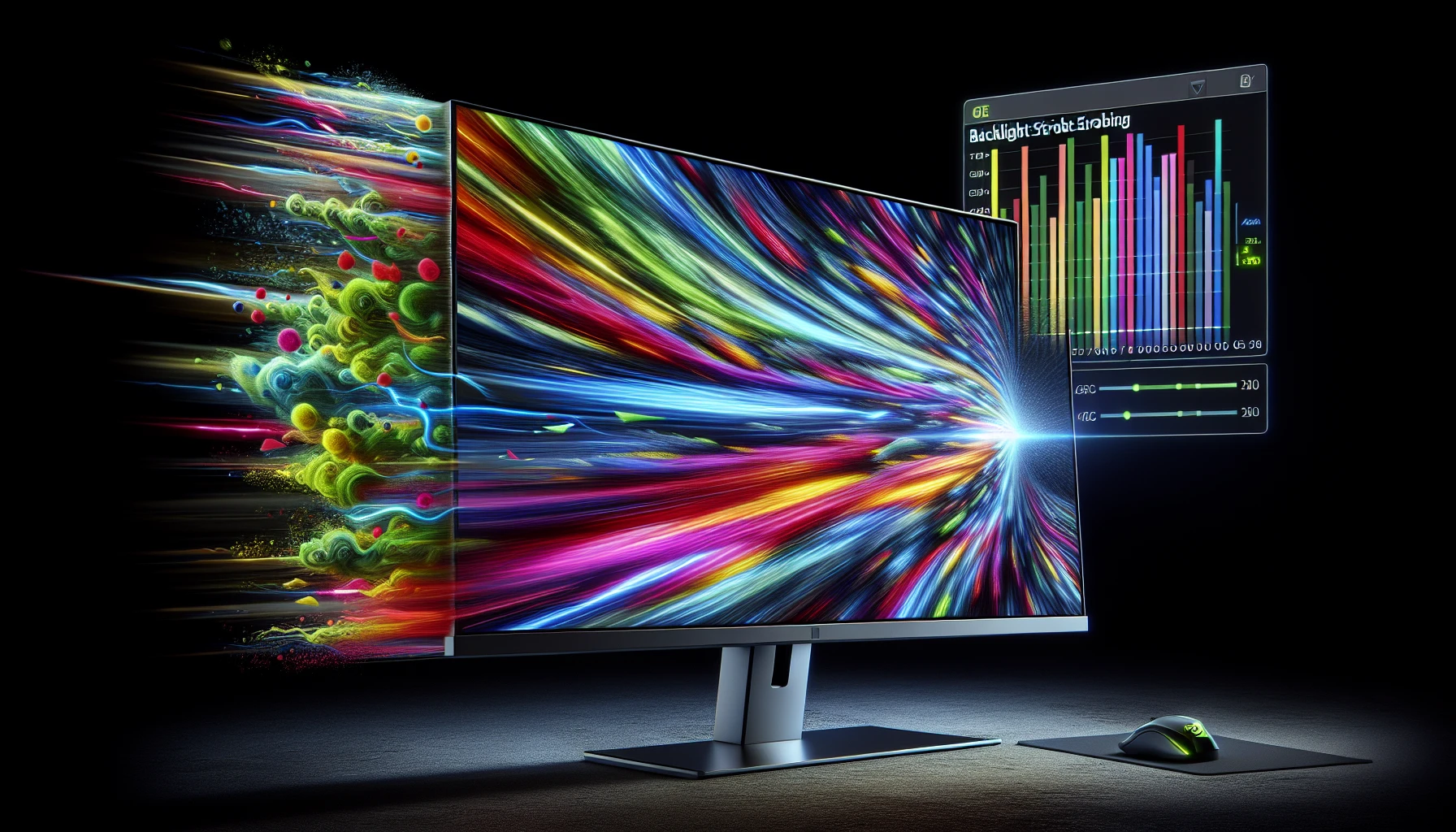Even if you have the biggest, baddest graphics card on the planet, your games still might not look as crisp as you’d expect. But don’t blame your GPU, blame your monitor. I’m talking about motion blur, that effect you see when the visuals on your screen get smeared around so things look blurry or ghosted.
Do note that this is completely unrelated to the motion blur setting you might find in some of your favorite games, which adds an artificial cinematic blurring effect if you quickly change the camera angle. Real motion blur has been the bane of gamers for a very long time. Not only does it look unappealing, but in competitive gaming, it can actually interfere with your performance.
The Problem with Motion Blur
But why exactly is motion blur still a problem, and how is NVIDIA’s new ULMB2 trying to fix it? The main cause has to do with how most computer monitors are designed. You’ll often see a specification when you’re monitor shopping called response time. Simply put, this is how long it takes the pixels to change colors, usually measured as how long it takes to go from one shade of gray to another.
On any display with a backlight, which means just about anything that isn’t an OLED, response times are not instantaneous. It actually takes a few milliseconds for your monitor’s pixels to execute a change, which is long enough for gamers to perceive motion blur. Because they’re higher beings, they’re better than most people on these displays.
How to Fight Motion Blur
The main way that you can fight motion blur is by enabling backlight strobing, a feature that turns the backlight off for short periods of time, meaning the screen is dark while the pixels are transitioning, reducing the amount of blur you can perceive.
Back in 2015, NVIDIA came out with their specific flavor of backlight strobing, which they called ULMB (Ultra Low Motion Blur). Unfortunately, because of the rather long pixel response times back then, the backlight would have to be off for 75 percent of the time. This meant the picture overall would often end up noticeably dim, reducing its appeal, especially for competitive gamers. Not to mention, ULMB would actually have to slow down the screen’s refresh rate in order to give the pixels enough time to transition.
Introducing ULMB2
However, NVIDIA has recently rolled out an improved version, uncreatively named ULMB2. But how exactly did they solve the issues that plagued the original? ULMB2’s advantage is that it doesn’t have to lower a panel’s refresh rate like its predecessor did. This improvement actually doesn’t even come from NVIDIA at all. Instead, it’s simply due to the fact that generally pixel response times are significantly shorter today than they were back in 2015.
ULMB2 also improves upon basic backlight strobing by controlling pixels on a more granular level. When pixels refresh to put a new image on your screen, they’re typically refreshed from the top down. So when the backlight flashes, some of those pixels will be in a state of transition, leading to a phenomenon called crosstalk, meaning part of the image will likely still have some blurring or ghosting.
But ULMB2 largely overcomes crosstalk by overdriving certain pixels with higher voltage, causing them to change state more quickly than others. Too much overdrive can lead to undesirable visual artifacts, but ULMB2 uses overdrive in a controlled way to create a sweet spot where the number of pixels mid-transition is at a minimum when the backlight turns on. This not only means less motion blur but also a brighter image than the original ULMB since the backlight is turned on for a greater proportion of the time.
Monitor Compatibility
Okay, but what’s the catch? Well, you’ll need a monitor that specifically supports ULMB2. At the time of writing, there are only two monitors on the market that do, and they’re not exactly cheap. As their high refresh rate G-SYNC displays aimed more at the competitive and enthusiast crowd. The good news is that nothing’s stopping you from just gaming on a 60Hz display if you don’t mind a little bit of ghosting. It’s not nearly as bad as the kind you get on the dating apps anyway.
And that’s it! NVIDIA’s ULMB2 is a significant improvement over its predecessor, offering a brighter image and less motion blur without sacrificing the panel’s refresh rate. While the technology is currently limited to a few monitors, it’s a promising development for gamers and enthusiasts alike.



